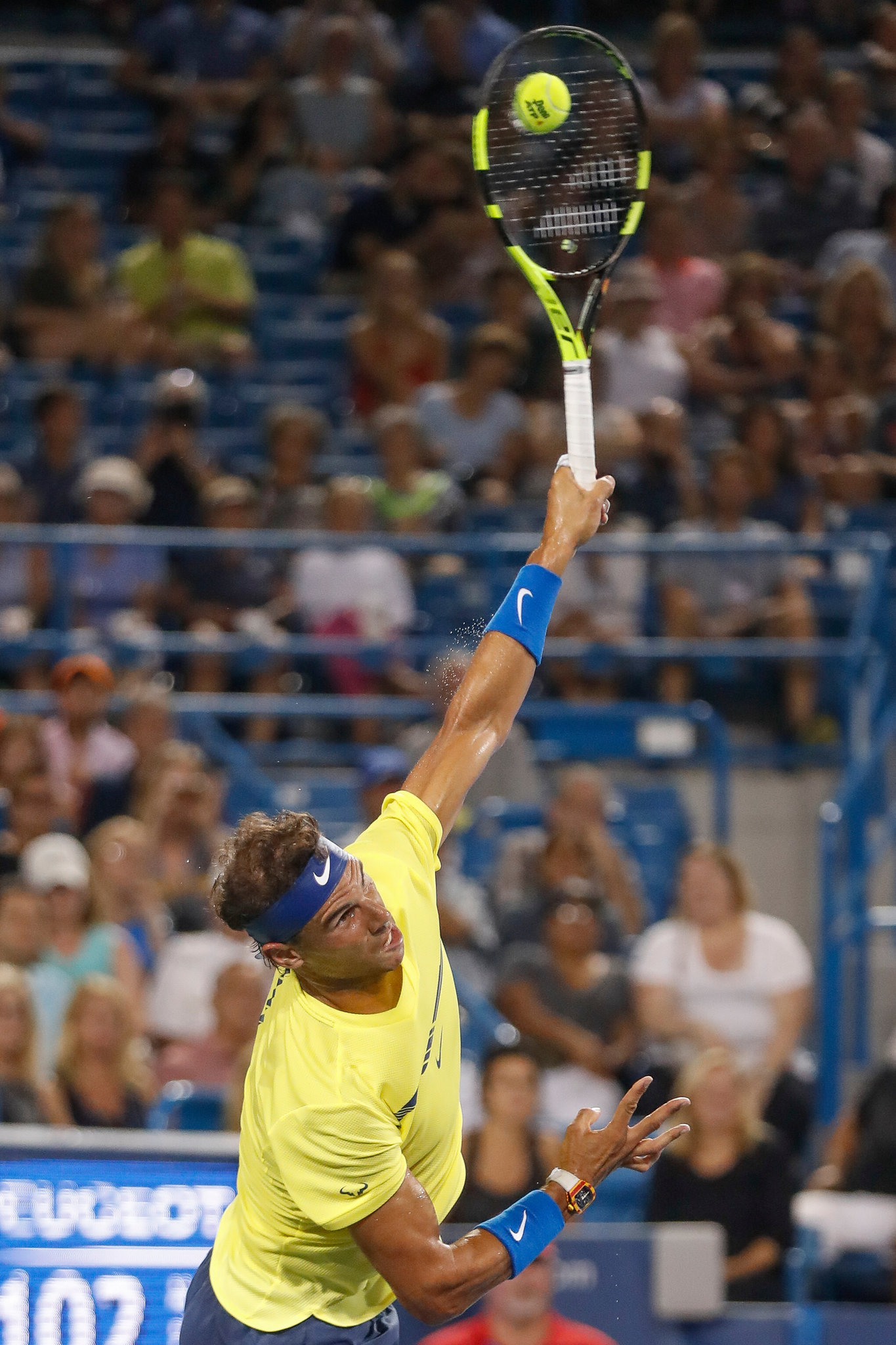
Keeping Score: The Key to the Resurgence of Nadal and Federer? Watch Their Second Serves
Nadal has won an impressive 61 percent of his second-serve points this season to lead the tour. Federer is right behind, having won 60 percent. Each player’s career average is 57 percent, and Nadal in particular has improved from last season, when he won 54 percent of his second-serve points.
They double-down on making a derivative of their game a peak performer. The rest of the tour tend to struggle mightily.

Credit
John Minchillo/Associated Press
Take the 2016 United States Open as an example. Performance behind first serves in New York in the men’s draw was outstanding, as always. There were 15,749 first serves hit in the court, with the server winning 11,209 of them, accounting for a dominant win percentage of 71 percent.
First serves are a cash cow, a stalwart of the portfolio.
At the 2016 Open, second serves were a losing prospect. There were 12,256 second serves hit last year, with the server winning 6,049 of the points, or 49.3 percent. Returners won more points than servers did when the point started with a second serve.
Winning points behind first serves is a given. Winning points behind a second serve is a privilege.
At the 2017 Australian Open, Federer won the tournament on the strength of winning 55 percent of his second-serve points. Nadal won the next Grand Slam event, the French Open, winning a ridiculously high 74 percent of his second-serve points. Federer then won Wimbledon, winning 67 percent of his second-serve points.
Second-serve performance is crucial to winning Grand Slam tournaments because second serves are the gateway for the returner to win crucial return points to break serve.
Nadal and Federer direct their second serves primarily at their opponents’ body on the backhand side, trying to jam them up while staying away from the danger of the centerline and sideline, and also staying clear of the opponent’s more potent forehand return.
Federer’s right-handed second serve is hit with topspin, kicking up high into the body on the backhand side of the returner. Nadal’s left-handed second serve is all slice, or side spin, either meant to move away from the returner, or chase him as he tries to move away from it.
For Nadal or Federer to win again in New York, performance behind their second serves will matter more than their scorching forehand winners, aces or adventures to the net.
Second serves are where the smart money lives. Over time, the best gains are accrued by limiting losses, and that is what separates Federer and Nadal from the field this year.
Continue reading the main story


